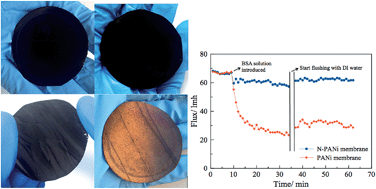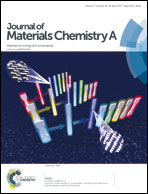Novel chlorine resistant low-fouling ultrafiltration membrane based on a hydrophilic polyaniline derivative
Abstract
We demonstrate that poly(n-2-hydroxyethyl aniline) (n-PANi), a derivative of polyaniline (PANi), provides an effective chlorine tolerant PANi-based ultrafiltration (UF) membrane. n-PANi was synthesized from its monomer via chemical oxidative polymerization. Unlike PANi, n-PANi can be dissolved in N-methyl-2-pyrollidone (NMP) up to 30 wt% to form a casting solution which is stable for months without the aid of an anti-gelling agent. Membranes formed from n-PANi show high resistance to chlorine, even when exposed to 250 ppm sodium hypochlorite for 30 days while PANi membranes completely lose their ability to reject bovine serum albumin (BSA, 6 nm) after 2 days. Spectroscopic studies indicate that the benzenoid groups in PANi membranes are oxidized while n-PANi membranes maintain their chemical structure. n-PANi membranes display high hydrophilicity with a contact angle of ∼36 degrees which contributes to their ultra-low adhesion of E. coli. Cross-flow fouling tests with 1.5 g L−1 BSA fouling solution reveal that n-PANi membranes exhibit low-fouling properties with only 11% flux decline and 91% flux recovery, superior to PANi and commercial polysulfone (PSf) membranes.


 Please wait while we load your content...
Please wait while we load your content...